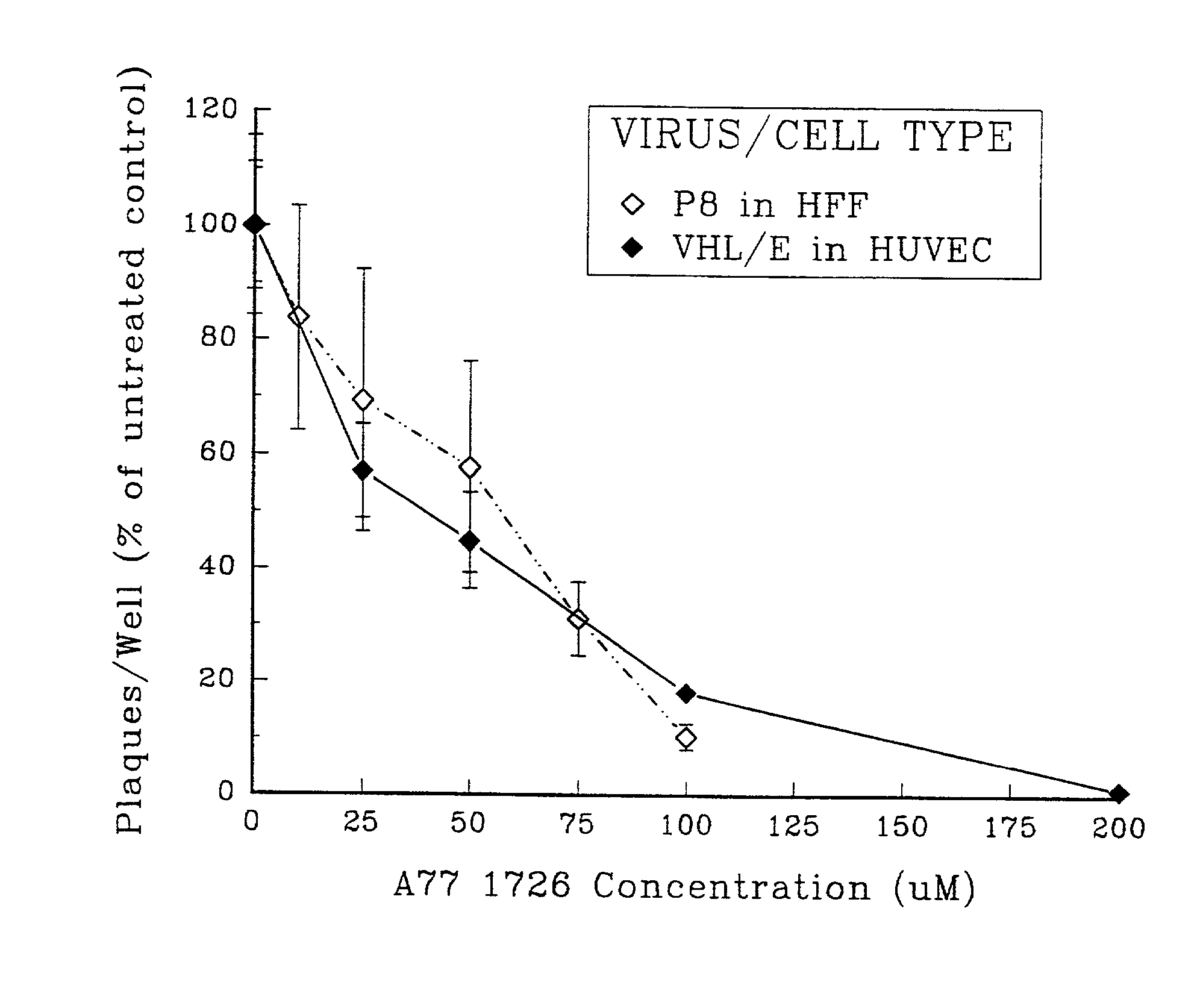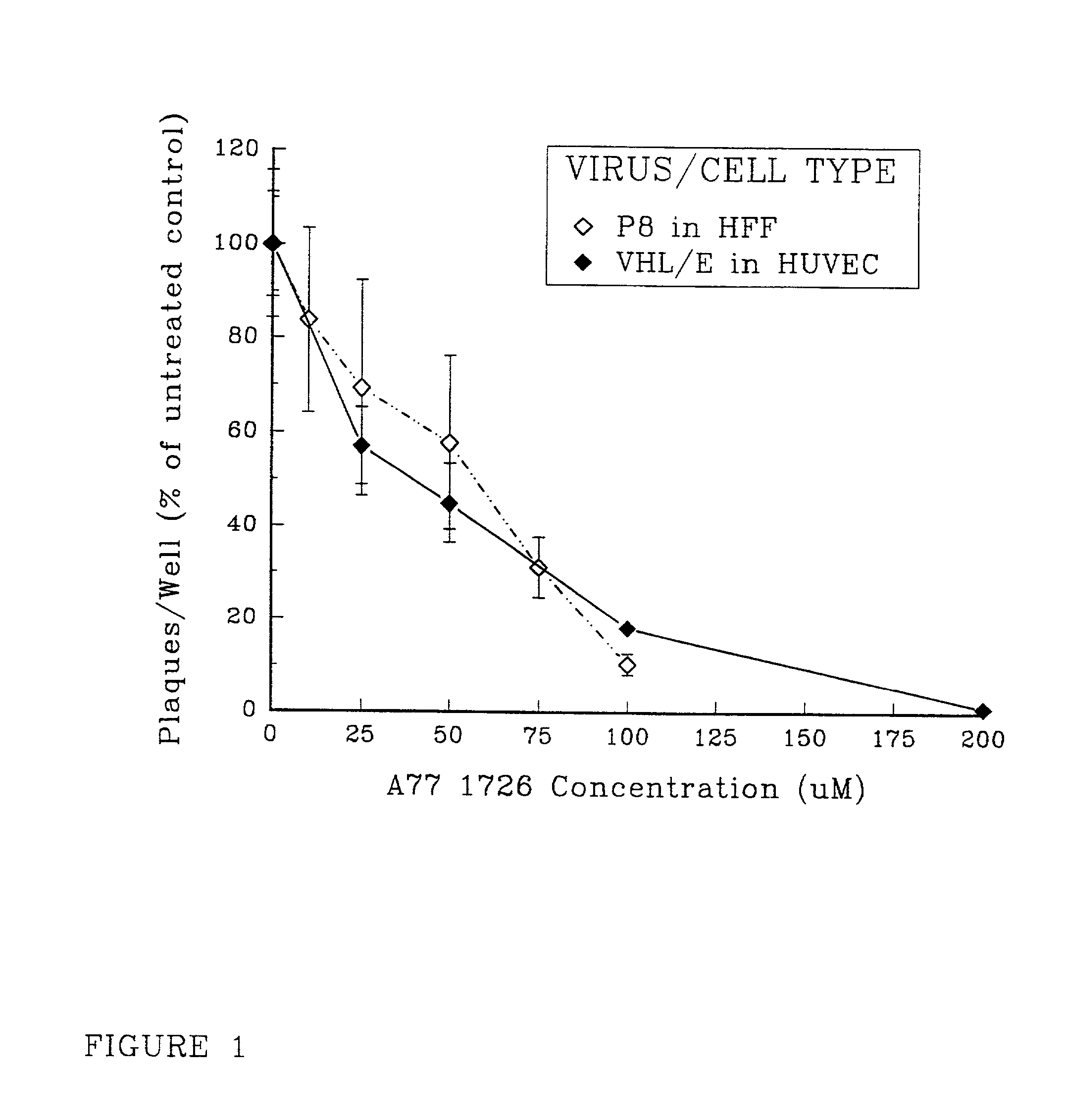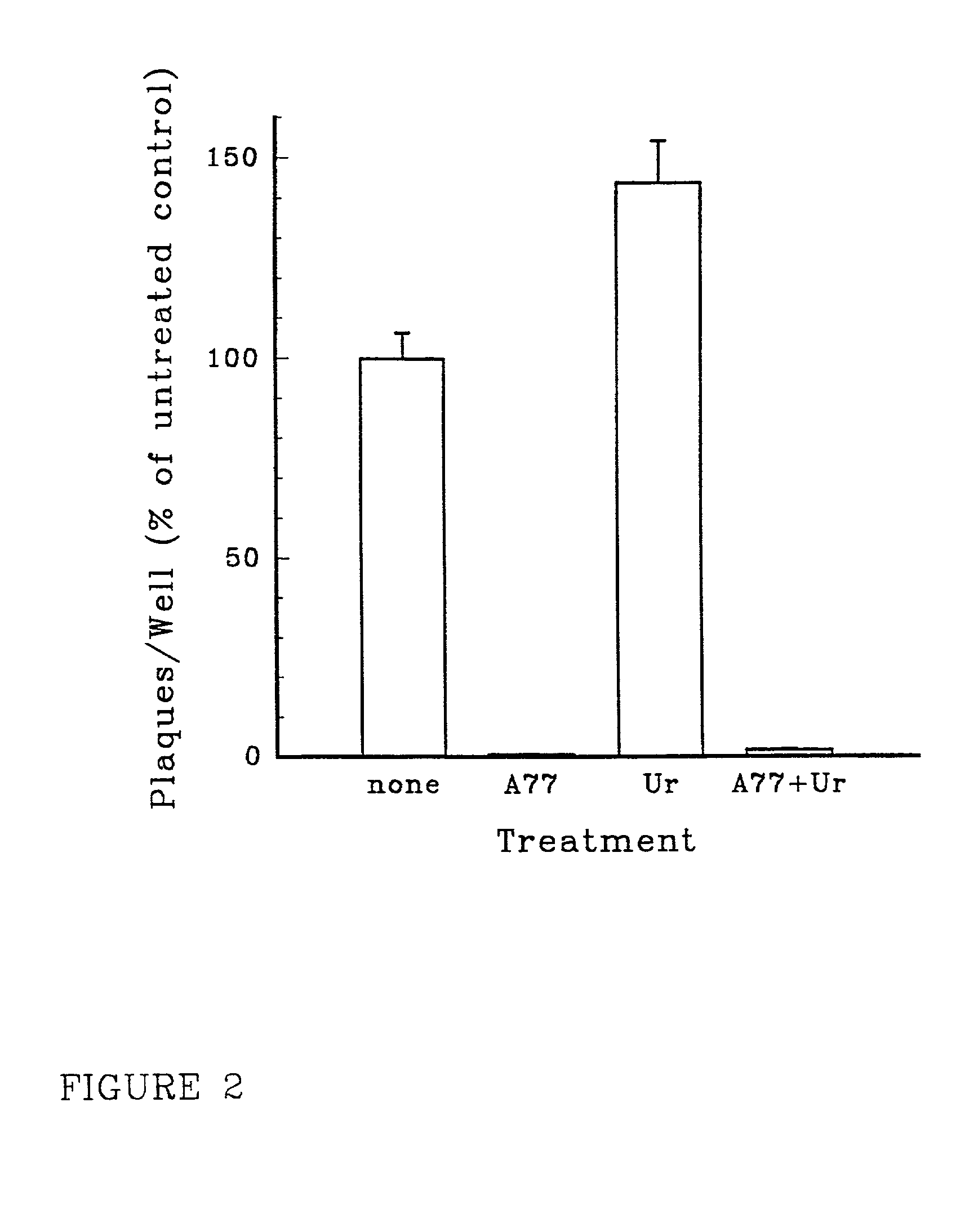Anti-viral uses of leflunomide products
a technology of leflunomide and antiviral use, which is applied in the direction of biocide, heterocyclic compound active ingredients, amide active ingredients, etc., can solve the problems of rare death of disseminated zoster, low antiviral effect, and low success rate of ebv isolation in cultur
- Summary
- Abstract
- Description
- Claims
- Application Information
AI Technical Summary
Benefits of technology
Problems solved by technology
Method used
Image
Examples
example 1
Plaque Assay of Leflunomide Product Effect on Infectious Virus Production
[0099]To determine the impact of leflunomide upon the production of infectious CMV in fibroblasts, standard plaque assays were performed in the presence of A771726, the active metabolite of leflunomide, at a range of concentrations equivalent to those which have been shown to attenuate immune activation by various stimuli in vitro.
[0100]Human foreskin fibroblasts (HFF) were inoculated with the clinical CMV isolate P8, overlaid with medium supplemented with 0.3% agarose and 0-100 μM A771726, then incubated for 10-14 days before plaque ennumeration under low-power microscopy. The experiments were carried out as follows. Human foreskin fibroblasts (HFF, Viromed, Minneapolis Minn.) were grown in Eagles MEM (GivcoBRL, Grand Island N.Y.) supplemented with 10% fetal bovine serum (FBS). MRC 5 human fibroblast cells (American Type Culture Collection, Rockville Md.) were propagated in MEM (Gibco) supplemented with 10% fe...
example 2
Anti-viral Effect of Leflunomide Product in the Presence of Exogenous Uridine
[0108]To determine whether reduction of intracellular pyrimidine nucleotide pools was responsible for the antiviral effects of leflunomide product, HUVEC were inoculated with CMV VHL / E as described above, then incubated for 4 days in the presence or absence of 200 μM A771726, 200 μM exogenous uridine, or both. Uninfected HUVEC were included in each experiment as negative controls. Cells were harvested and small aliquots of each group were sonicated and assayed for plaque formation on MRC 5 monolayers as described above. The remainder of cells were extracted in trichloroacetic acid, then in tri-n-octylamine and 1,1,2-trichloro-trifluoro-ethane. Intracellular pyrimidine nucleotide (pyNTP) levels were quantitated by HPLC.
[0109]Confluent HUVEC monolayers in 6-well culture plates were pre-treated for 1 hour fresh ECGM alone or with ECGM supplemented with 20 μM A771726, 200 μM uridine, or both (6 wells / treatment)...
example 3a
Effect of Leflunomide Product on Viral Protein Expression
[0112]Experiments were conducted to determine at which point in the viral replication cycle leflunomide exerts its inhibitory effects. Immediately upon penetration of the host cell, CMV lower matrix protein pp65, a component of the viral tegument, translocates to the cell nucleus. Although the nuclear function of pp65 remains to be resolved, another tegument protein (pp71) that migrates in a similar manner acts in concert with cellular proteins to promote rapid transcription of immediate early (IE) viral genes. IE gene products are primarily regulatory, activating early gene transcription, whose products are essential for viral DNA replication. Activation of late genes, which code primarily for structural protein components of the virion, occurs late in the replicative cycle and is dependent upon viral DNA replication.
[0113]To localize potential A771726-induced lesions in this temporal series of events, a cross section of CMV ...
PUM
| Property | Measurement | Unit |
|---|---|---|
| diameter | aaaaa | aaaaa |
| pH | aaaaa | aaaaa |
| size | aaaaa | aaaaa |
Abstract
Description
Claims
Application Information
 Login to View More
Login to View More - R&D
- Intellectual Property
- Life Sciences
- Materials
- Tech Scout
- Unparalleled Data Quality
- Higher Quality Content
- 60% Fewer Hallucinations
Browse by: Latest US Patents, China's latest patents, Technical Efficacy Thesaurus, Application Domain, Technology Topic, Popular Technical Reports.
© 2025 PatSnap. All rights reserved.Legal|Privacy policy|Modern Slavery Act Transparency Statement|Sitemap|About US| Contact US: help@patsnap.com



